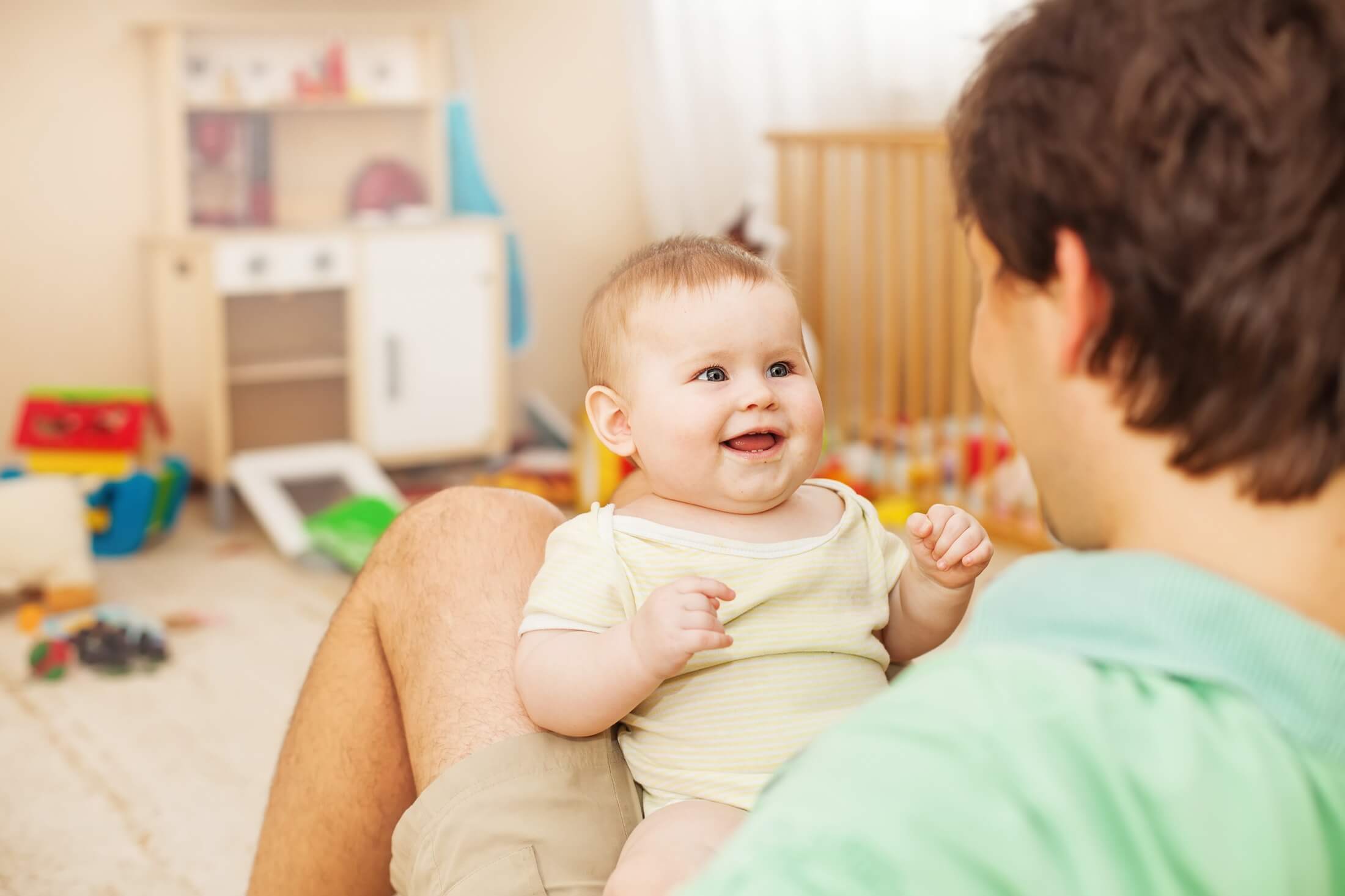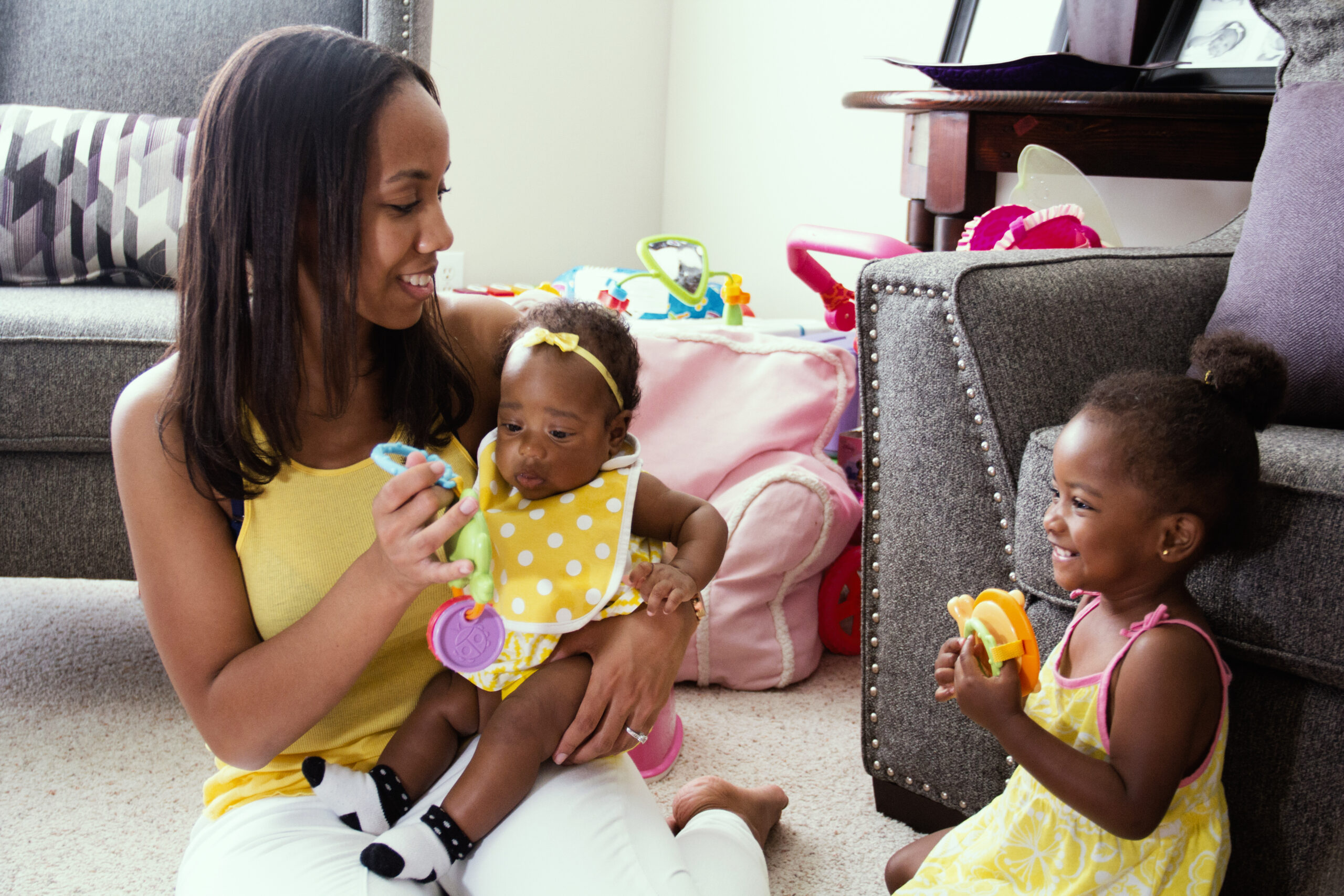Talk, Read, Play: The Foundation of Development
At the Rollins Center, we believe Talk, Read, and Play are essential tools to building a solid developmental foundation with a focus on language and literacy for children birth to 5. But what exactly does that mean? Check out our articles below to see how you can make a difference in your child’s language development. Learn more about these approaches and how they fit into your child’s development!
Developmental Milestone Tracker
Choose an age or select up to 3 age groups to compare expected milestones between them.
| 2 Months | 4 Months | 6 Months | 9 Months | 12 Months | 15 Months | 18 Months | 2 Years | 30 Months | 3 Years | 4 Years | 5 Years | |
|---|---|---|---|---|---|---|---|---|---|---|---|---|
| Language / Communication |
|
|
|
|
|
|
|
|
|
|
|
|
| Social / Emotional |
|
|
|
|
|
|
|
|
|
|
|
|
| Cognitive |
|
|
|
|
|
|
|
|
|
|
|
|
| Movement / Physical |
|
|
|
|
|
|
|
|
|
|
|
|
| When to Talk to a Doctor |
You know your baby best – don’t wait! If your baby is not meeting one or more milestones, has lost skills he or she once had, or you have other concerns, act early. If you or your doctor are still concerned:
For more on how to help your baby, visit cdc.gov/Concerned |
You know your baby best – don’t wait! If your baby is not meeting one or more milestones, has lost skills he or she once had, or you have other concerns, act early. If you or your doctor are still concerned:
For more on how to help your baby, visit cdc.gov/Concerned |
You know your baby best – don’t wait! If your baby is not meeting one or more milestones, has lost skills he or she once had, or you have other concerns, act early. If you or your doctor are still concerned:
For more on how to help your baby, visit cdc.gov/Concerned |
You know your baby best – don’t wait! If your baby is not meeting one or more milestones, has lost skills he or she once had, or you have other concerns, act early. If you or your doctor are still concerned:
For more on how to help your baby, visit cdc.gov/Concerned |
You know your baby best – don’t wait! If your baby is not meeting one or more milestones, has lost skills he or she once had, or you have other concerns, act early. If you or your doctor are still concerned:
For more on how to help your baby, visit cdc.gov/Concerned |
You know your baby best – don’t wait! If your baby is not meeting one or more milestones, has lost skills he or she once had, or you have other concerns, act early. If you or your doctor are still concerned:
For more on how to help your baby, visit cdc.gov/Concerned |
You know your baby best – don’t wait! If your baby is not meeting one or more milestones, has lost skills he or she once had, or you have other concerns, act early. If you or your doctor are still concerned:
For more on how to help your baby, visit cdc.gov/Concerned |
You know your baby best – don’t wait! If your baby is not meeting one or more milestones, has lost skills he or she once had, or you have other concerns, act early. If you or your doctor are still concerned:
For more on how to help your baby, visit cdc.gov/Concerned |
You know your baby best – don’t wait! If your baby is not meeting one or more milestones, has lost skills he or she once had, or you have other concerns, act early. If you or your doctor are still concerned:
For more on how to help your baby, visit cdc.gov/Concerned |
You know your baby best – don’t wait! If your baby is not meeting one or more milestones, has lost skills he or she once had, or you have other concerns, act early. If you or your doctor are still concerned:
For more on how to help your baby, visit cdc.gov/Concerned |
You know your baby best – don’t wait! If your baby is not meeting one or more milestones, has lost skills he or she once had, or you have other concerns, act early. If you or your doctor are still concerned:
For more on how to help your baby, visit cdc.gov/Concerned |
You know your baby best – don’t wait! If your baby is not meeting one or more milestones, has lost skills he or she once had, or you have other concerns, act early. If you or your doctor are still concerned:
For more on how to help your baby, visit cdc.gov/Concerned |
| Helpful Resources | 2-months-Milestone-Checklist-2021 | 4-months-Milestone-Checklist-2021 | 6-months-Milestone-Checklist-2021 | 9-months-Milestone-Checklist-2021 | 12-months-Milestone-Checklist-2021 | 15-mo.-Milestone-Checklist-2021 | 18-mo-Milestone-Checklist-2021 | 2-yrs-Milestone-Checklist-2021 | 30-mo.-Milestone-Checklist-2021 | 3-yrs-Milestone-Checklist-2021 | 4-yrs-Milestone-Checklist-2021 | 5-yrs-Milestone-Checklist-2021 |


